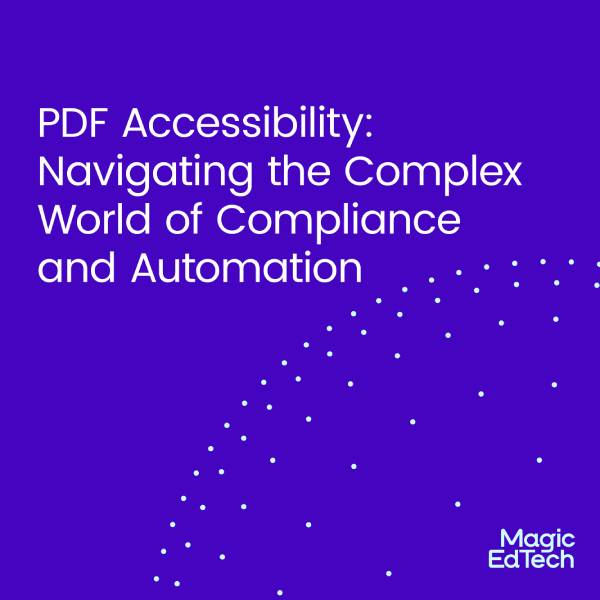European Accessibility Act: What It Entails for Your Digital Products
- 28 March, 2023
- Reading Time: 5 minutes
Did you know that nearly 87 million Europeans face a constant struggle to access basic necessities like using their mobile phones or traveling on public transport? These simple tasks may seem like a no-brainer, but without proper accessibility features, they can be a daily hurdle for many.
The European Accessibility Act is an important step towards improving the lives of those with disabilities. It represents a giant leap forward in ensuring that everyone can enjoy the same quality of everyday life.
What is the European Accessibility Act (EAA)?
The EAA is a new regulation that was adopted by the European Union in 2019. It requires member states to ensure that certain products and services are accessible to people with disabilities. The Act covers a wide range of products and services, including computers, phones, banking services, e-books, and public transport.

Who does the European Accessibility Act (EAA) apply to?
The EAA applies to all EU member states and, more importantly, to all companies planning to trade within the EU.
The Act mandates that all products and services falling under its domain must adhere to specific minimum accessibility standards, which may differ based on the nature of the product or service. Below are some of the general accessibility requirements that apply to all products and services:
The information about a product’s use must be:
- Available through multiple sensory channels, easy to understand and perceivable by users.
- In a readable font, size, and shape, with adjustable spacing and sufficient contrast.
- If instructions aren’t on the product, they must be publicly available via a website explaining the product’s accessibility functions, how to activate them, and their compatibility with assistive solutions must be publicly available when product is placed on the market.
In case of a product or service is made available through a website, then it must:
- Provide text formats that can be converted into alternative assistive formats.
- Provide an alternative presentation of any non-textual content.
- Describe the product’s user interface and functionality, including features for persons with disabilities.
- Include a description of the product’s software and hardware interfacing with assistive devices, along with a list of tested devices.
- Provide information through multiple sensory channels and alternatives to visual, auditory, speech, and tactile elements.
- Offer flexible options for magnification, brightness, contrast, and interoperability with assistive devices.
- Ensure user control of volume and speed for audio, tactile discernible parts, privacy protection, and consistency of functionality while meeting sector-specific requirements.
The accessibility measures specified in the EAA should be put into effect by June 28, 2025. The reporting and review period must be finalized by June 28, 2030, and then repeated every five years.
What are the requirements of EAA?
The European Accessibility Act aims to promote full and equal participation of people with accessibility needs in society, including the elderly and people with temporary or situational disabilities. This can be achieved by establishing accessibility requirements for a range of essential products and services.
For example, websites and devices must-have features that make them accessible to people with visual impairments, such as screen readers and magnifiers. ATMs must be designed to make them accessible to people with physical disabilities, such as providing braille instructions, tactile keypads, or audio assistance during transactions.
The EAA mandates several criteria that products and services must meet, which include:
- Non-discrimination: Ensuring that every product and service is equally available to everyone, irrespective of disability.
- Design for all: The design process of the product or service must Incorporate accessibility considerations from the outset.
- Harmonization: Ensuring that accessibility requirements are consistent throughout all the products and services within the EU regions.
- Accessibility statement: All manufacturers and service providers need to provide an accessibility statement that explains how their product or service satisfies the EAA’s accessibility prerequisites.

What does EAA mean to businesses?
The European Accessibility Act is focused majorly on businesses in the EU and those who cater to audiences in Europe. It will benefit businesses by creating a more level playing field for companies that are committed to accessibility.
Adhering to the EAA’s accessibility regulations may lead to:
- Cost Reduction – The EU Commission has estimated that varying accessibility requirements resulted in a cost of around €20 billion to both companies and member states in 2020. However, the implementation of the EAA is expected to bring about a reduction of 45% to 50% in these costs.
- Easier trading within multiple countries – With a single set of accessibility requirements across the EU, cross-border trading will become easier for businesses.
- Larger Market Reach – Businesses will get the opportunity to cater their products and services to a wider range of audiences, including approximately 100 million people living in the EU with a disability.
In addition to meeting legal requirements, creating accessible products can improve businesses’ Corporate Social Responsibility profile and brand image. Providing equal access to your products and services can reduce barriers and improve the user experience while promoting equality in hiring practices.
How should you prepare for compliance with EAA?
A crucial initial step is to educate your entire organization about the basics of how people with disabilities use websites and navigate the web. This shared understanding is essential to move forward to achieve your accessibility goals.
It’s also important to understand the Web Content Accessibility Guidelines (WCAG)and how to incorporate them into your products. This will enable you to establish clear objectives and achieve them systematically.
Additionally, the Act mandates that websites must provide information on their accessibility features. Users should be able to access a website’s content and structure, navigate through web pages, and use assistive devices to do so.
Nevertheless, before implementing any changes, it’s vital to assess your website’s current accessibility level. Conducting a comprehensive audit of your entire domain will help you identify any issues and determine the amount of time required to address them.
Contact accessibility experts, create a budget, and plan your accessibility improvements accordingly. It’s essential to establish an actionable framework as soon as possible to save time and reduce stress later. While getting started may seem daunting, remember that achieving accessibility is not a one-time accomplishment. It’s a continuous process with the end goal being worth it for everyone involved.





